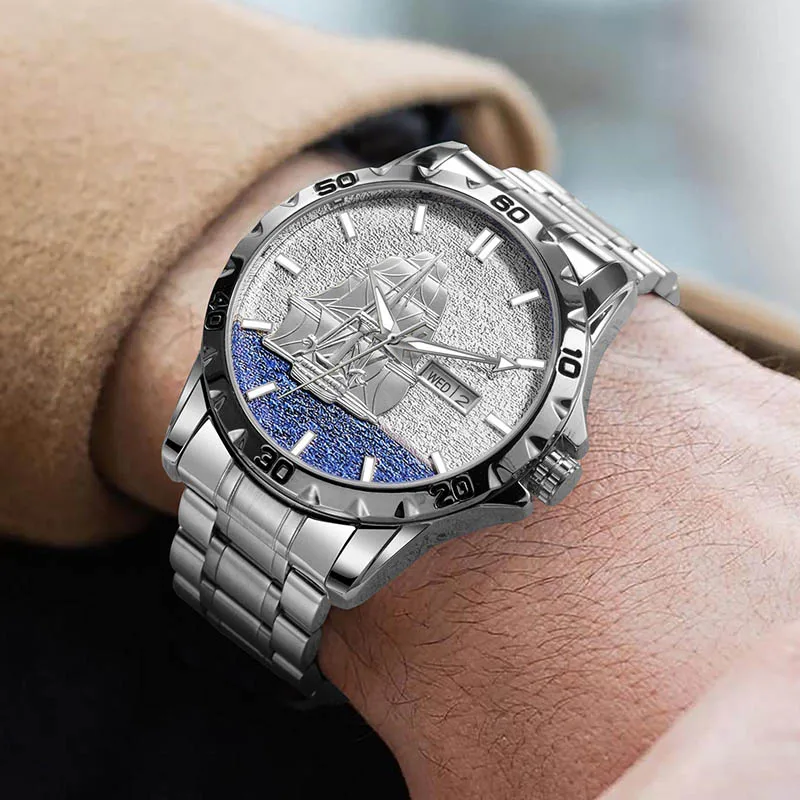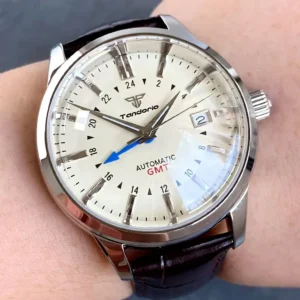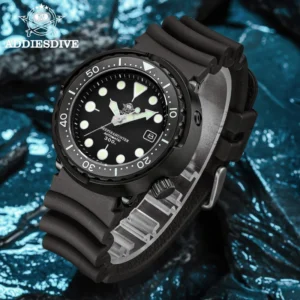From Waterproofing to Deep-Sea Tools: A Chronological Journey of Dive Watch Innovation
Dive watches represent one of the most fascinating intersections of necessity and ingenuity in the world of timepieces. What began as simple attempts to protect watches from moisture has evolved into sophisticated instruments capable of withstanding the crushing pressures of the ocean depths. These timepieces have transcended their utilitarian origins to become cultural icons, coveted by divers and collectors alike.
The evolution of dive watches tells a compelling story of human innovation. From basic water resistance of just a few meters to today’s timepieces that can survive trips to the deepest ocean trenches, each advancement has pushed the boundaries of what’s possible in mechanical engineering. These innovations weren’t created in isolation—they were born from the real needs of underwater explorers, military divers, and marine researchers.
Perhaps most remarkably, the core principles established in the history of dive watch engineering continue to influence watchmaking far beyond specialized diving instruments. The quest for reliability in extreme conditions has produced solutions that benefit everyday timepieces, showing how specialized innovation often leads to broader technological progress.
The Genesis: Early Attempts at Conquering Water (Pre-1920s)
Water has always been the natural enemy of precision timepieces. Early watchmakers faced the persistent challenge of protecting delicate watch movements from moisture, which could quickly ruin a watch’s internal components. Their first solutions were pragmatic but limited—pocket watches housed in additional protective outer cases called “hunter cases” offered minimal protection but couldn’t withstand actual submersion.
The earliest patents for water-resistant timepieces appeared in the late 19th century, focusing primarily on creating better seals around vulnerable points like the crown and case back. These attempts were hampered by the materials available at the time; early gaskets and seals were made from materials like cork, leather, and lead, which degraded quickly and couldn’t maintain compression under pressure.
The transition from pocket watches to wristwatches during World War I created new challenges for water resistance. Wristwatches, exposed to the elements and worn during all activities, demanded more effective milestones in underwater watch engineering that would take decades of innovation to perfect.
The Roaring Twenties & Beyond: The Dawn of True Water Resistance (1920s-1940s)
The 1920s marked a revolutionary turning point in the quest for water resistance with the introduction of the Oyster case system. This three-part design featured a threaded bezel, case back, and winding crown that screwed down against the middle case section, creating an unprecedented seal against water intrusion. This innovation solved the most vulnerable point of water ingress—the crown—by incorporating threads that sealed tighter under pressure.
Public demonstrations became crucial for establishing credibility for these early water-resistant watches. The most famous demonstration featured a watch worn during a cross-Channel swim, remaining functional despite hours of exposure to saltwater. These publicity stunts weren’t just marketing—they were necessary proof that water resistance had moved from theory to practical reality.
Military applications during the interwar period and World War II drove further refinements. Naval forces required reliable underwater timepieces, leading to cushion-shaped cases designed to withstand pressure and improved luminous dial markings for visibility in dark underwater conditions. These military specifications pushed manufacturers to develop increasingly robust designs that would eventually form the foundation of purpose-built diving watches.
This period transformed “waterproof” from a marketing claim to a genuine functional characteristic, setting the stage for the emergence of classic style dive watches that would soon become essential equipment for a new generation of underwater explorers.
The Golden Age Part I: Birth of the Modern Dive Watch (1950s) – The Archetypes Emerge
The 1950s witnessed the birth of the modern dive watch, driven largely by the popularization of SCUBA (Self-Contained Underwater Breathing Apparatus) diving. As recreational and professional diving became more accessible, the need for purpose-built underwater timing instruments became acute. This decade saw the emergence of two archetypal designs that would define the category for generations to come.
These first true dive watches introduced several critical innovations beyond mere water resistance:
- Rotating timing bezels that allowed divers to monitor elapsed time underwater
- Enhanced water resistance ratings of 100m (328ft) or greater
- Highly legible dials with oversized markers and hands
- Robust automatic movements that eliminated the need for frequent crown manipulation
- Improved luminous materials for visibility in dark underwater conditions
What made these timepieces truly revolutionary was their development in direct collaboration with professional divers. Military frogmen and underwater explorers provided invaluable feedback on the features and specifications needed for actual underwater work. The result was a new category of tool watch designed with singular purpose and clarity of function.
The influence of these early designs remains evident in modern dive watches, with many contemporary timepieces paying homage to the proportions, layouts, and design elements established during this pivotal period in dive watch heritage and evolution. These weren’t just incremental improvements—they represented a complete reimagining of what a water-resistant watch could be.
The Golden Age Part II: Pushing Boundaries & Specialization (1960s-1970s)
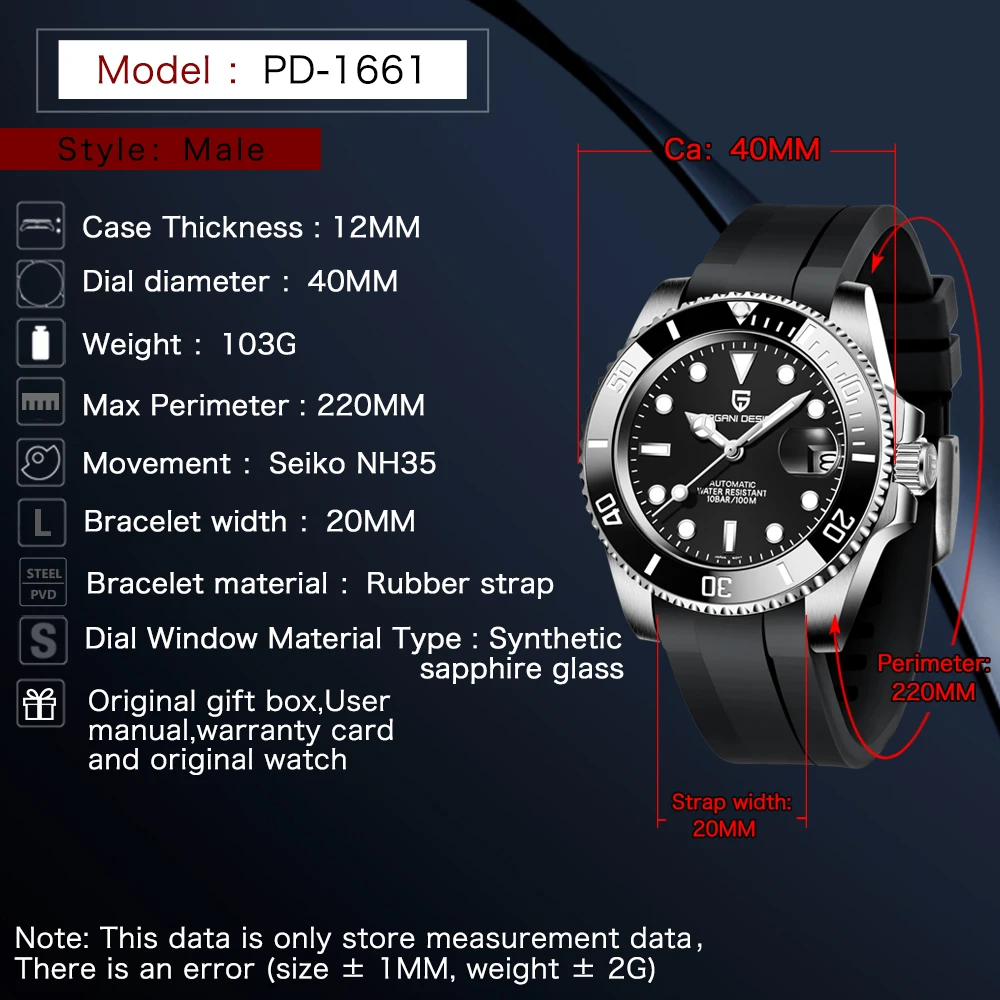
The 1960s and 1970s represented a period of extraordinary innovation in dive watch development, with manufacturers competing to create timepieces capable of meeting increasingly specialized diving needs.
The Depth Race
Water resistance ratings escalated dramatically during this period. While early dive watches offered protection to around 100m (328ft), new models pushed to 200m (656ft), then 300m (984ft), and eventually even 1000m (3280ft). These advances were achieved through improved case engineering, thicker crystals, more sophisticated gasket systems, and reinforced case backs designed to withstand enormous pressure.
Critical Safety Innovations
The unidirectional rotating bezel emerged as a crucial safety feature during this period. Unlike earlier bidirectional bezels, these could only be rotated counterclockwise, ensuring that any accidental bumps would only display more elapsed time, never less—a potential life-saving feature for divers monitoring remaining air supplies.
Luminous dial materials also underwent significant transformation. Earlier radioactive materials like radium were replaced with safer alternatives like tritium, addressing serious health concerns while maintaining the critical functionality of underwater readability.
Specialized Professional Tools
For professional saturation divers working at extreme depths for extended periods, the helium escape valve became an essential innovation. These one-way valves allowed helium molecules (which penetrated watch cases during long-term exposure to mixed breathing gases) to safely exit during decompression, preventing the crystal from popping off due to internal pressure buildup.
The integration of mechanical depth gauges directly into dive watches represented another specialized advancement, allowing divers to monitor both time and depth with a single instrument. These sophisticated complications demonstrated the ongoing evolution of dive watch technology toward more comprehensive underwater tools.
Material Innovations
This era also saw significant experimentation with case materials beyond standard stainless steel. Titanium made its appearance in dive watches, offering superior corrosion resistance and lighter weight. Meanwhile, extreme-depth models experimented with monobloc case constructions and specialized designs to distribute pressure more effectively.
Japanese manufacturers emerged as significant contributors during this period, introducing reliable and innovative designs that often incorporated cutting-edge materials and production techniques. Their entry into the market expanded the availability of professional spec dive watches at more accessible price points.
The Quartz Revolution & Digital Horizons (1980s)
The 1980s ushered in a technological revolution that fundamentally changed the dive watch landscape. Quartz technology, with its superior accuracy and reliability, offered significant advantages for underwater timing. Without the complex mechanics of automatic movements, quartz dive watches could achieve better water resistance with fewer potential failure points.
The most groundbreaking development of this era was the integration of digital depth sensors directly into wristwatches. For the first time, a single instrument could electronically measure, display, and record depth information alongside the time. These hybrid analog-digital designs represented a significant leap in functionality, providing divers with unprecedented data access underwater.
This period marked the beginning of the dive computer era, which would eventually transform diving practices. Early dive computers incorporated not only depth sensors but also timing functions, ascent rate monitors, and no-decompression limit calculators. These devices fundamentally changed how divers planned and executed their dives, gradually replacing the dive tables and timing bezels that had been standard practice.
Despite these technological advances, traditional mechanical dive watches demonstrated remarkable resilience. Many professional divers continued to wear mechanical timepieces as backup instruments, appreciating their reliability independent of batteries and electronics. This practice continues even today, highlighting the enduring value of mechanical reliability in critical situations as documented in the history of professional diving watches evolution.
The 1980s represented a crucial divergence point where dive watches began to follow two distinct evolutionary paths: increasingly sophisticated electronic instruments focused on diving functionality, and mechanical timepieces that maintained traditional attributes while emphasizing heritage, craftsmanship, and style.
Modern Marvels: ISO Standards, Advanced Materials, and Luxury Appeal (1990s-Present)
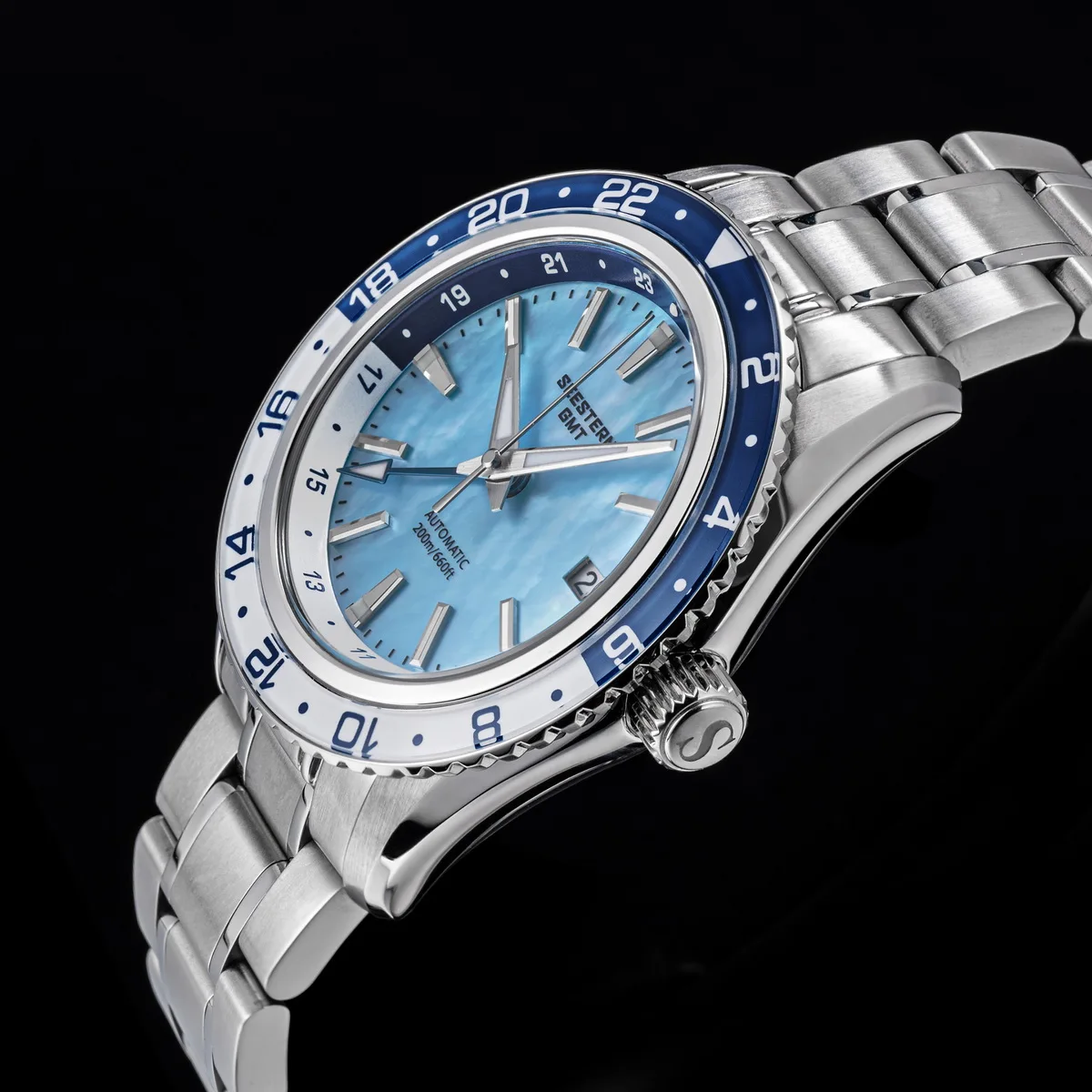
The modern era of dive watch development has been characterized by standardization, material innovation, and an increasing emphasis on luxury appeal alongside technical performance.
The establishment of the ISO 6425 standard brought formal requirements to what constitutes a true dive watch. These specifications include:
- Minimum water resistance of 100m (328ft)
- Time-preselecting capability (typically via rotating bezel)
- Legibility at 25cm (9.8in) in total darkness
- Magnetic, shock, and chemical resistance
- A clearly visible indication that the watch is running (usually a seconds hand)
- Specific testing protocols to verify these capabilities
Materials science has revolutionized dive watch construction. Modern dive watches incorporate:
* Ceramic bezels offering superior scratch resistance and color stability
* Grade 5 titanium cases providing excellent strength-to-weight ratio
* Sapphire crystals with anti-reflective coatings for improved legibility
* Advanced rubber and silicone strap compounds engineered for durability in saltwater
Luminous technology has also evolved dramatically. Photoluminescent compounds like Super-LumiNova have replaced radioactive materials, providing bright, long-lasting glow without the safety concerns of earlier solutions. Some modern dive watches even incorporate luminous bezel markings and crown indicators for enhanced underwater utility.
Automatic Chronograph Watches, Classic Style Dive Watches
$3,053.06 Select options This product has multiple variants. The options may be chosen on the product pageBronze Automatic Watches, Military Inspired Automatic Watches, Professional Spec Dive Watches
Price range: $1,442.21 through $1,442.82 Select options This product has multiple variants. The options may be chosen on the product pageProfessional Spec Dive Watches, Titanium Automatic Watches
$574.74 Select options This product has multiple variants. The options may be chosen on the product pageClassic Automatic Dress Watches, GMT Automatic Watches, GMT Dive Watches
Price range: $468.93 through $552.94 Select options This product has multiple variants. The options may be chosen on the product pageDay Date Automatic Watches, Professional Spec Dive Watches
Price range: $751.60 through $790.26 Select options This product has multiple variants. The options may be chosen on the product pageClassic Automatic Dress Watches, Classic Style Dive Watches
Price range: $742.56 through $1,099.56 Select options This product has multiple variants. The options may be chosen on the product page
Engineering innovations have enabled extreme depth capabilities that exceed any practical diving needs. Watches rated to 1000m, 3000m, and even deeper demonstrate technical prowess rather than practical necessity—a testament to the pursuit of engineering excellence for its own sake.
Perhaps most significantly, dive watches have evolved from pure tools to luxury status symbols. While maintaining their core functionality, modern automatic dive watches often feature elaborate finishing, premium materials, and sophisticated design elements that appeal to collectors and enthusiasts who may never take them underwater.
Independent watchmakers and microbrands have contributed significantly to this landscape, offering innovative designs and features while often honoring the heritage of classic dive watch aesthetics. Many contemporary dive watches incorporate additional complications like chronographs and GMT functions, as seen in specialized GMT dive watches that combine multiple capabilities in a single instrument.
A Legacy Etched in Time: Key Dive Watch Innovations Summarized
The evolution of dive watches represents a remarkable journey of continuous innovation. The most significant developments include:
The Screw-Down Crown: By creating a threaded seal that tightens under pressure, this innovation solved the most vulnerable point of water ingress in early watches, establishing the foundation for true underwater timepieces.
The Rotating Timing Bezel: This simple yet brilliant addition transformed watches into critical safety tools by enabling divers to monitor elapsed time underwater, with the unidirectional version preventing potentially fatal miscalculations.
Enhanced Luminosity Systems: The development of increasingly effective luminous materials—from radioactive compounds to modern photoluminescent alternatives—ensured that dive watches remained readable in the darkness of the underwater world.
The Helium Escape Valve: This specialized feature addressed the unique needs of saturation divers, demonstrating how dive watch engineering has responded to even the most niche professional requirements.
The ISO 6425 Standard: By establishing clear technical requirements, this standard created a benchmark for what constitutes a true dive watch, bringing consistency and reliability to the category.
Advanced Case Materials: The introduction of materials like titanium, ceramic, and bronze has enhanced durability, reduced weight, and expanded the aesthetic possibilities of dive watches, as demonstrated in our GMT dive watches collection.
Each of these innovations contributed to making dive watches not only more capable timing instruments but also more versatile, reliable, and appealing timepieces that continue to resonate with enthusiasts worldwide.
The Future Depths: What’s Next for Dive Watches?
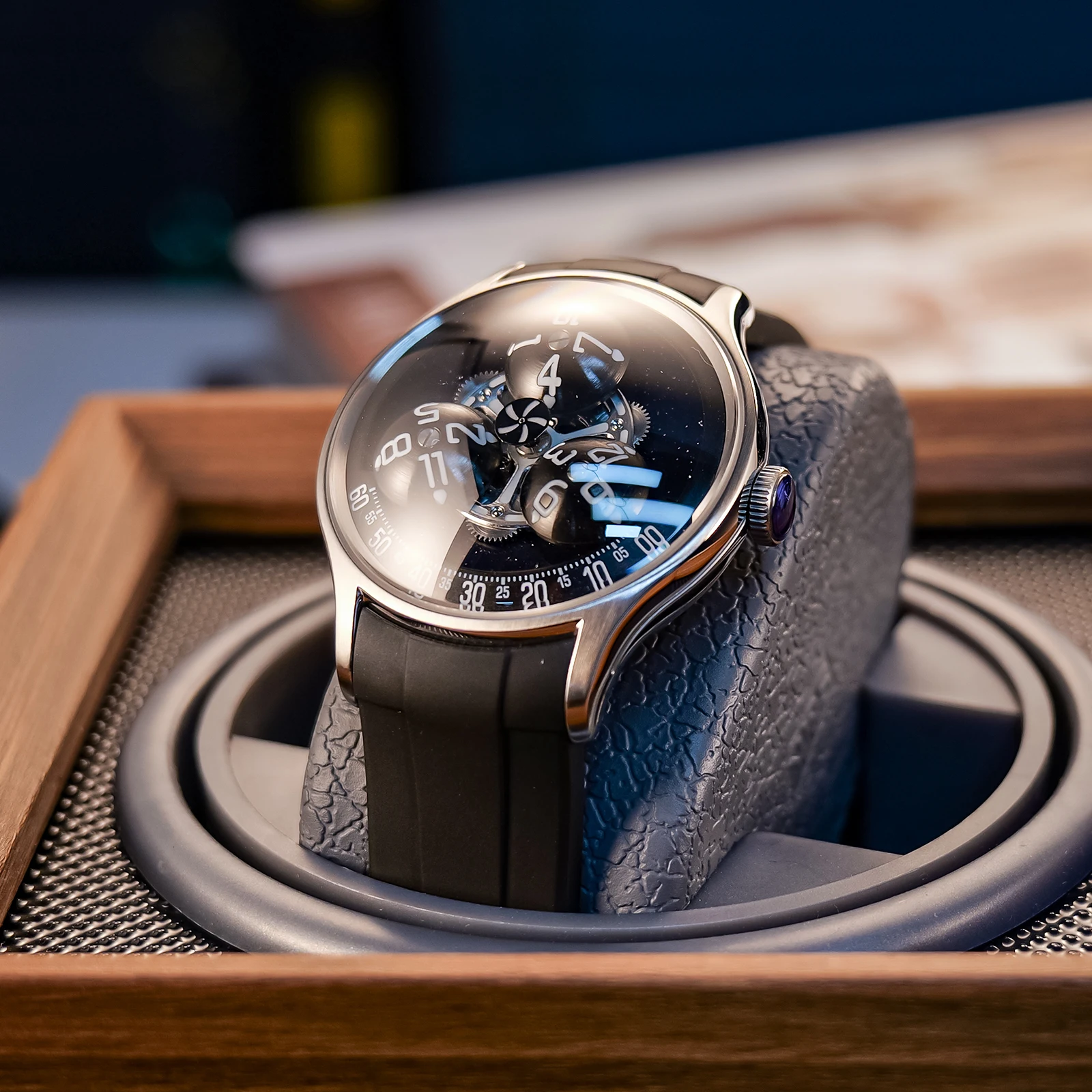
As we look toward the future of dive watch development, several intriguing trends emerge that may shape the next generation of underwater timepieces.
The integration of smart technology with traditional dive watch designs presents fascinating possibilities. Hybrid models that maintain mechanical movements while incorporating digital sensors could offer the reliability of traditional timekeeping with enhanced data capabilities. These “connected” dive watches might maintain classic aesthetics while providing valuable diving metrics through companion apps.
Sustainability is increasingly influencing watchmaking, including dive watch production. Eco-friendly manufacturing processes, recycled materials, and greater emphasis on long-term durability are becoming priorities. Some manufacturers are already experimenting with recycled ocean plastic for straps and packaging, connecting dive watches more directly to ocean conservation efforts.
The pursuit of extreme depth capabilities continues unabated, with engineering teams developing solutions for ever-greater pressure resistance. While these watches may exceed practical diving requirements, they serve as platforms for innovation that eventually benefits the broader dive watch category.
Perhaps most importantly, dive watches maintain their appeal as backup instruments and style icons. Even in an era of sophisticated dive computers, the simplicity and reliability of a mechanical dive watch ensures its place in a diver’s kit. The enduring popularity of bronze automatic watches demonstrates how material innovation continues alongside appreciation for the aging characteristics and unique patina that connects these timepieces to maritime traditions.
Future designs will likely continue balancing innovation with heritage, preserving the iconic elements that define dive watches while incorporating new technologies and materials that enhance their performance and appeal.
More Than Just Timekeepers – A Testament to Human Ingenuity
The dive watch’s remarkable journey from simple waterproofed timepiece to sophisticated underwater instrument speaks to the extraordinary creativity of watchmakers faced with the challenges of the ocean environment. These timepieces represent a perfect marriage of form and function—practical tools that have become artistic expressions of precision engineering.
Many innovations pioneered specifically for dive watches have influenced broader watchmaking traditions. Enhanced water resistance, improved luminosity, and more robust case constructions now benefit everyday watches, making them more durable and reliable for all wearers. The dive watch innovation timeline shows how specialized solutions often lead to universal improvements.
Beyond their technical merits, dive watches carry cultural significance as symbols of adventure and exploration. They connect wearers to a rich heritage of underwater discovery and human achievement. Each dive watch tells a story—not just of underwater timing but of humanity’s persistent drive to overcome natural limitations through ingenuity and craftsmanship.
In an age of digital disposability, the mechanical dive watch stands as a testament to enduring quality and purposeful design. Their continued relevance and desirability, decades after their core functionality has been surpassed by digital alternatives, demonstrates that great tools transcend mere utility to become something more meaningful—artifacts that capture the essence of human innovation in physical form.

